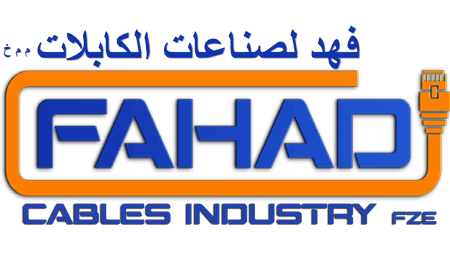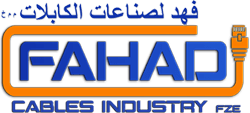Exploring Cat5e U/UTP Outdoor PE Ethernet Cables by Fahad Cables Industry FZE
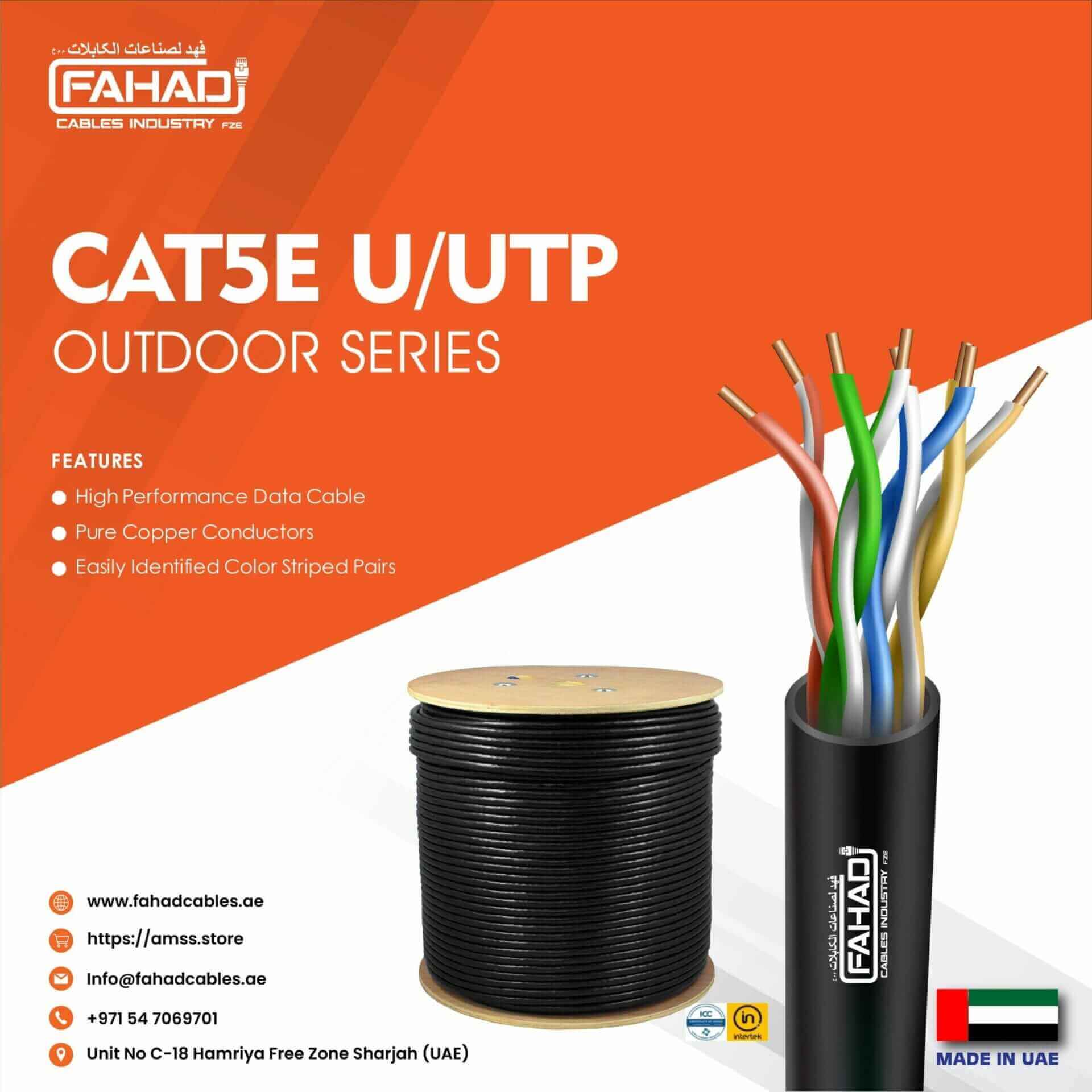
Introduction to Ethernet Cables
Ethernet cables are an essential component of modern networking, facilitating the transfer of data between devices in both residential and commercial environments. They form the backbone of local area networks (LANs), connecting computers, routers, switches, and other peripherals. These cables enable high-speed data communication, making them crucial for tasks ranging from internet browsing to streaming and gaming.
There are various types of Ethernet cables available in the market, each designed to serve different functions and applications. The most common types include Cat5e, Cat6, Cat6a, and Cat7 cables. Cat5e cables, for instance, support speeds of up to 1 Gbps over a distance of 100 meters, making them suitable for many home and small office applications. On the other hand, newer standards like Cat6 and Cat7 offer enhanced performance and greater bandwidth, which are important for more demanding applications.

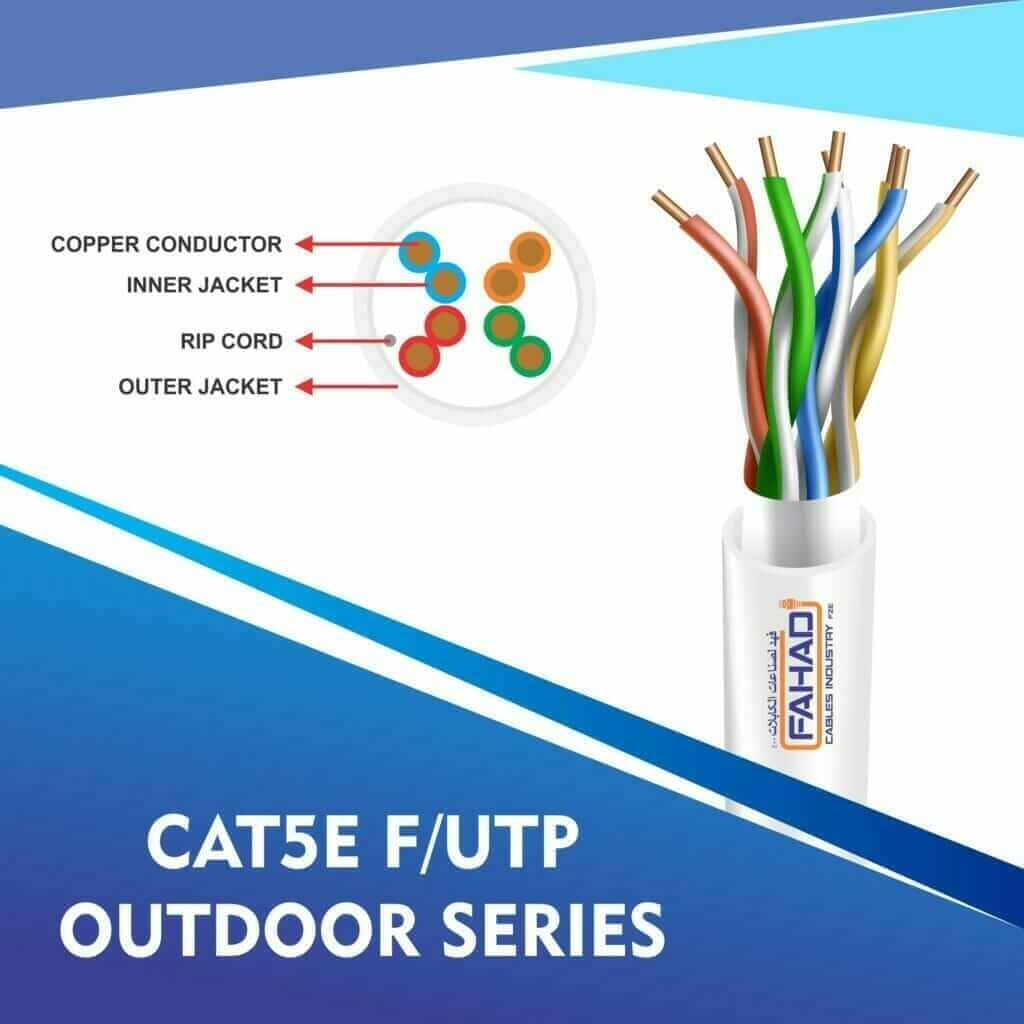


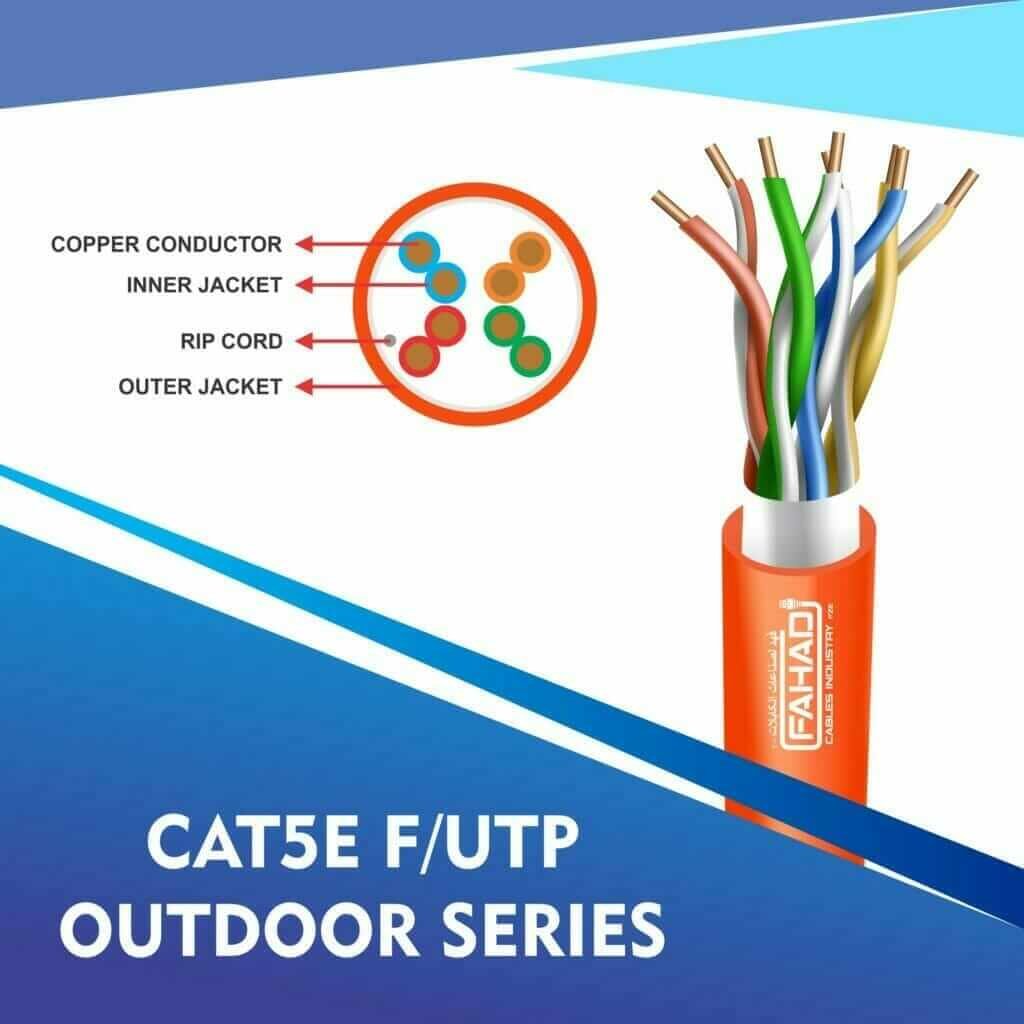
When choosing an Ethernet cable, it is essential to consider the environment in which it will be used. Indoor cables are typically designed for standard office or home settings, whereas outdoor cables, such as Cat5e U/UTP Outdoor PE Ethernet cables, are specifically engineered to withstand environmental factors like moisture, UV rays, and temperature fluctuations. These outdoor cables provide superior durability and reliability, ensuring uninterrupted communication in outdoor installations.
Choosing the right Ethernet cable for your specific needs is crucial, as it can significantly impact network performance and data integrity. By understanding the different types available and their respective applications, users can make informed decisions to enhance their networking experience, whether indoors or outdoors.
Understanding Cat5e Cables
Cat5e, or Category 5 Enhanced cables, represent an important advancement in Ethernet technology, designed to improve upon the original Category 5 standard. With the ability to support higher data rates and reduce signal interference, Cat5e cables have become a popular choice for both residential and commercial networking applications. One of the defining characteristics of these cables is their enhanced bandwidth capacity, which can reach up to 1000 Mbps, making them suitable for a variety of uses, including high-speed internet connections, data transfer, and VoIP services.
Additionally, Cat5e cables are equipped to handle frequencies of up to 100 MHz, allowing for clearer signal transmission over extended distances. This is particularly significant compared to its predecessor, the standard Cat5 cable, which operates at lower frequencies and may not maintain consistent performance in environments with significant electrical interference. As a result, users can expect improved reliability and efficiency when utilizing Cat5e cables within networking setups.
Another notable aspect of Cat5e cables is their versatility in various environments. The construction of these cables allows them to be effectively deployed in both indoor and outdoor settings. For outdoor purposes, the use of polyethylene (PE) jackets ensures resistance to environmental factors such as moisture and UV radiation. This makes Cat5e U/UTP Ethernet cables particularly advantageous for applications where exposure to the elements is a concern, such as outside Wi-Fi access points or security cameras.
In evaluating networking options, understanding the capabilities and advantages of Cat5e cables is crucial. The combination of enhanced performance, excellent bandwidth capacity, and adaptability to different environments positions Cat5e cables as a preferred choice for those seeking efficient and reliable networking solutions.what is cat5 cat6 and cat7 cable,cat5 cat6,cat5 data sent as,cat5 ethernet cable speed,cat5 extender,cat5 gauge,cat5 length limit,cat5 punch down tool,cat5 vs cat6 vs cat7,cat5e cable,cat5e cable tester,cat5e colors,cat5e crossover cable,cat5e jack,cat5e top speed,cat5e utp cable,coax to cat5,rj45 connector cat5e,smart cat5 xt 1100,1000ft cat5e,50m cat5 cable,can i use cat7 instead of cat5,cat5 coupler,cat5 rj45,cat5 speed limit,cat5 vs cat6,cat5 vs cat6 cable,cat5 vs cat6 difference,cat5e bandwidth limit,cat5e cable diameter,cat5e cable price,cat5e cable specs,cat5e cord,cat5e lan cable,
The Importance of U/UTP Configuration
U/UTP, which stands for Unshielded Twisted Pair, is a configuration widely utilized in Ethernet cabling, particularly suited for outdoor applications. The U/UTP structure consists of pairs of conductors twisted together without any additional shielding. This design allows for efficient transmission of electrical signals over relatively long distances while minimizing crosstalk and external interference. The importance of U/UTP lies in its effective balance between cost, performance, and application versatility, especially when compared to shielded variants.
The structure of U/UTP cables involves eight insulated conductors organized as four twisted pairs. The twisting of the pairs helps to cancel out electromagnetic interference, making U/UTP an ideal choice for installations where external interference might be a concern. Unlike shielded cables, which incorporate additional materials to safeguard against interference, U/UTP cables can be more flexible and lighter, enhancing their ease of installation in various environments.
In terms of electrical performance, U/UTP cables are capable of supporting high data transfer rates while maintaining signal integrity. This is crucial in outdoor applications where physical conditions might change rapidly. U/UTP’s efficient design also provides excellent resilience against the typical challenges posed by outdoor environments, including variations in temperature and exposure to moisture. Consequently, they can offer reliable connections in settings such as outdoor network systems, telecommunication networks, and surveillance applications.
Furthermore, U/UTP cables are often less expensive to manufacture and install compared to shielded cables, making them a cost-effective choice for businesses and organizations that require extensive cabling solutions without compromising on quality. Overall, U/UTP configurations provide a practical and effective means of ensuring robust Ethernet connectivity in diverse outdoor environments.
Outdoor PE Jacket: Features and Benefits
The polyethylene (PE) jacket used in outdoor Cat5e U/UTP Ethernet cables plays a crucial role in safeguarding the integrity and performance of the cables in challenging environments. One of the primary characteristics of PE cable jackets is their exceptional resistance to environmental factors, which is particularly vital for outdoor installations. This material is engineered to withstand exposure to ultraviolet (UV) rays, effectively preventing degradation that could otherwise compromise cable functionality over time.
Moreover, PE jackets exhibit remarkable moisture resistance, which is essential for protecting the internal wiring from detrimental effects that could arise from rain, humidity, or other forms of wetness. The ability of the PE jacket to repel moisture ensures that the cable maintains its operational capacity and reduces the risk of signal interference due to water infiltration. Furthermore, this moisture barrier extends the overall lifespan of the cable, contributing to a more reliable performance.
In addition to UV and moisture protection, the durability of the PE jacket against physical damage cannot be overlooked. Outdoor cables often face various hazards, including potential abrasions, cuts, and pressure from surrounding environments. The robust nature of polyethylene helps to prevent both accidental damage and wear that might occur during installation or subsequent maintenance. This resilience is instrumental in ensuring that the cable can endure the rigors of outdoor use without compromising its signal quality.
Ultimately, the use of a polyethylene jacket in outdoor Ethernet cabling offers substantial benefits that contribute to both longevity and reliability. By choosing cables with high-quality PE jackets, users can be assured of optimal performance despite the demanding conditions present in outdoor installations.
Manufacturing Excellence at Fahad Cables Industry FZE
Fahid Cables Industry FZE has established itself as a leading manufacturer of Ethernet cables in the United Arab Emirates. Situated in Sharjah, the company’s state-of-the-art facilities are integral to its reputation for producing high-quality products, particularly Cat5e U/UTP outdoor PE Ethernet cables. The production process implemented at Fahd Cables is marked by meticulous attention to detail, ensuring that each cable meets the stringent performance and durability standards required for both commercial and residential applications.
The manufacturing operations at Fahad Cables are enhanced by advanced technologies and equipment, allowing for precision in cable construction. Automated machinery and quality testing systems are employed to monitor every stage of production, ensuring consistency and superiority in the final product. This commitment to utilizing modern technology underlines the company’s ethos of innovation and quality assurance. Furthermore, rigorous quality control measures are implemented throughout the manufacturing process, from raw material selection to final testing. These measures include comprehensive laboratory assessments that evaluate factors such as electrical conductivity, insulation properties, and resistance to environmental conditions.
Additionally, Fahad Cables Industry FZE places a strong emphasis on research and development. By continually exploring advancements in materials and techniques, the company strives to enhance product performance and longevity. This forward-thinking approach not only differentiates their Cat5e U/UTP outdoor PE Ethernet cables in the competitive market but also demonstrates their commitment to sustainability and environmental responsibility. The continuous investment in the workforce through training and development further adds to the company’s ability to adapt to changing industry demands. Overall, Fahad Cables Industry FZE’s dedication to excellence in manufacturing solidifies its position as a trusted provider of Ethernet solutions in the UAE.
Applications of Cat5e U/UTP Outdoor PE Cables
Cat5e U/UTP outdoor PE cables are designed to function in a variety of environments, making them suitable for a range of applications across residential, commercial, and industrial settings. The unique construction of these cables, which includes a weather-resistant polyethylene jacket, enables them to withstand various outdoor conditions, such as moisture, UV exposure, and temperature fluctuations.
In residential areas, Cat5e U/UTP outdoor cables can be used to create robust home networking solutions, linking outdoor devices like security cameras, wireless access points, and smart home systems. These cables ensure stable and high-speed internet connectivity, particularly in homes that require reliable outdoor streaming or surveillance capabilities.
Commercial environments also benefit significantly from these cables, particularly in businesses that require secure and efficient communication networks. For instance, outdoor digital signage, point-of-sale systems in outdoor markets, and inter-building connections in campus-style environments all make use of Cat5e U/UTP outdoor PE cables. Their reliability and performance play a crucial role in maintaining seamless communication and data transfer among various systems and devices.
In the industrial sector, the durability of Cat5e U/UTP outdoor cables renders them ideal for use in manufacturing and warehouse settings. They can facilitate communication between machines, sensors, and control systems located outside of traditional indoor environments. This adaptability is vital in industries where robust connectivity is necessary to monitor operations and enhance productivity.
Moreover, these cables find applications in surveillance systems that require outdoor connectivity. They support the installation of security cameras and other monitoring equipment that are exposed to the elements. The reliability of the Cat5e U/UTP outdoor PE cables ensures uninterrupted video feeds and data transfer, essential for maintaining security protocols in various facilities.
Installation Guidelines for Outdoor Ethernet Cables
When working with outdoor Ethernet cables, such as the Cat5e U/UTP Outdoor PE variants from Fahad Cables Industry FZE, it is crucial to follow specific installation guidelines to ensure their optimal performance and longevity. The first step in the installation process involves assessing the installation site to identify potential environmental hazards that may affect the cable. Consider factors such as temperature fluctuations, moisture levels, and UV exposure, which can significantly impact the cable’s durability.
Proper handling of outdoor Ethernet cables is essential. Always handle the cables with care to avoid kinks and crush damage, which could compromise their performance. During installation, avoid exceeding the recommended bending radius, usually around four times the cable’s diameter. This helps maintain the integrity of the internal wiring and ensures the cable remains effective over its lifespan.cat5e length limit
When it comes to the actual installation, use appropriate cabling techniques. It is advisable to run the cables in a manner that minimizes exposure to direct sunlight, such as burying them underground or using protective conduits. Ensure that the cable is not subject to extreme tension or stress during installation, as this can lead to internal damage and signal degradation.
Additionally, incorporating environmental protective measures such as waterproofing connectors and utilizing proper grounding methods can further enhance the reliability of outdoor Ethernet installations. It’s also recommended to maintain a safety distance from high-voltage lines to avoid electromagnetic interference.
In conclusion, by adhering to these installation guidelines, one can enhance the reliability and performance of outdoor Ethernet cables, ensuring they function optimally in various environmental conditions. This preparation ultimately contributes to a robust network infrastructure that supports efficient communication needs.
Comparative Analysis with Other Cable Types
When considering Ethernet cables for networking, particularly in outdoor applications, the choice often narrows down to several common types, notably Cat5e U/UTP, Cat6, and Cat6a. Each of these cables has distinct characteristics that cater to different networking needs. A comparative analysis is essential for understanding which cable type is most suitable for a given scenario.
Starting with speed, Cat5e U/UTP cables can handle speeds of up to 1 Gbps, which suffices for many standard applications. In contrast, Cat6 cables support speeds of up to 10 Gbps over shorter distances (approximately 55 meters), making them ideal for environments where high-speed data transfer is critical. Cat6a, an advanced version of Cat6, retains this 10 Gbps capacity over longer distances (up to 100 meters), making it the preferred choice for extensive networks requiring sustained high performance.
Bandwidth is another crucial factor; Cat5e offers a bandwidth of 100 MHz, while Cat6 and Cat6a boast higher capacities at 250 MHz and 500 MHz, respectively. This higher bandwidth results in better performance when dealing with heavy data loads, video conferencing, or high-volume downloads, which are increasingly common in business settings.
Cost-effectiveness is often a primary concern in cable selection. Cat5e U/UTP cables are typically the least expensive option, making them an attractive choice for small-scale projects or budget-conscious installations. While Cat6 and Cat6a cables involve higher startup costs, their superior performance and capability to support future bandwidth demands might justify the investment for larger businesses or data centers.
Ultimately, the decision between these cable types should be guided by specific usage requirements, existing infrastructure, and budget constraints. By thoroughly evaluating these aspects, one can choose the most appropriate cable type to optimize network performance and sustain operational efficiency.
Conclusion: The Future of Outdoor Ethernet Wiring
As we explore the intricacies of outdoor Ethernet wiring, particularly the exceptional Cat5e U/UTP Outdoor PE Ethernet cables produced by Fahad Cables Industry FZE, it becomes clear that the future of networking technology will continue to evolve rapidly. The growing demands for bandwidth, speed, and reliability in various applications emphasize the importance of investing in high-quality cabling solutions. Cat5e cables are widely recognized for their performance capabilities, enabling data transmission at speeds up to 1 Gbps, which is increasingly necessary in today’s interconnected environment.
Furthermore, the advancements in cabling materials and manufacturing processes are paving the way for more durable and reliable options that withstand harsh outdoor conditions. The use of polyethylene (PE) in outdoor-rated cables is a significant breakthrough, offering resistance to moisture, UV rays, and physical wear. As industries and individuals rely more on high-speed internet for their operations and daily activities, the relevance of robust cable solutions like those from Fahad Cables will only increase.
Looking forward, emerging technologies such as 5G connectivity will also play a pivotal role in shaping the future of Ethernet cabling. As wireless networks expand, the relationship between wired and wireless infrastructures will necessitate an upgrade in cabling standards to maintain optimal performance. Consequently, the demand for Ethernet cables that can support both current and future networking requirements will rise. Adopting top-tier products such as Cat5e U/UTP Outdoor PE Ethernet cables not only ensures top performance today but also represents a strategic investment in preparing for the technological advancements of tomorrow.
In conclusion, as we embrace the advancements in networking technology, it is essential to prioritize quality in outdoor Ethernet cabling. Fahad Cables Industry’s commitment to excellence in their products provides a reliable foundation for meeting the ever-evolving needs of modern networking.
